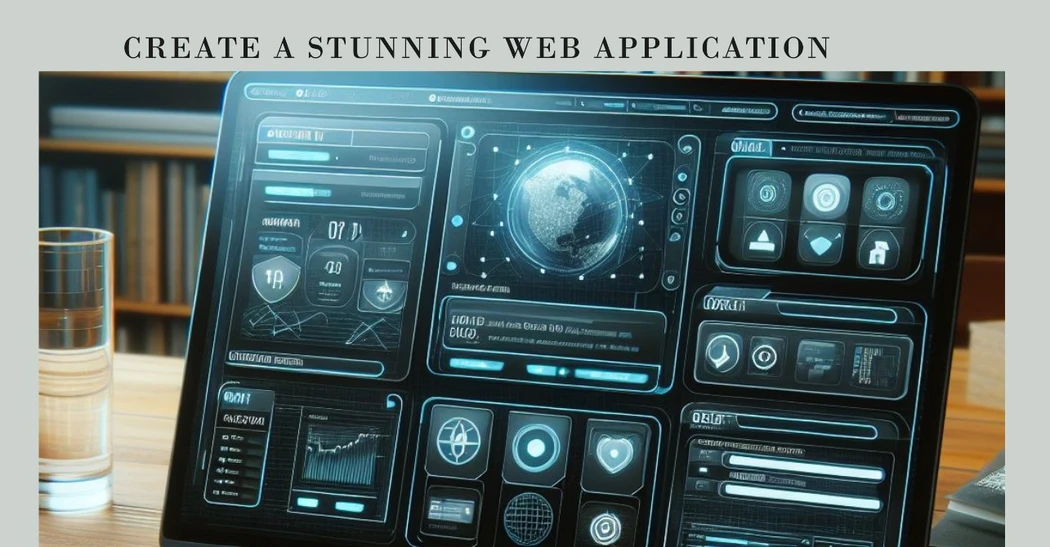Feeling stuck with a legacy system and outdated software? Then, legacy systems modernization is all you need. But how will you plan such modernization? Hire a custom software development company to make this process easier. They will help modernize your outdated system with advanced technologies efficiently to boost your productivity and business performance.
Your business is growing, but your legacy systems are holding you back. Today, artificial intelligence, cloud computing, machine learning, and big data analysis have become integral to software development. Keeping up with emerging technologies is crucial to stay ahead of the curve.
A bespoke software development company can guide you in adopting the right strategies to modernize your old-fashioned system. They can also help you seamlessly connect your old systems to new software to streamline processes, gain valuable insights, and embrace innovation.
So, ready to ditch the outdated system integration process? Stay tuned in!
In this blog, we’ll explore the challenges of legacy system integration and discuss how software development companies help overcome them.
What is Legacy System Integration: Understanding Custom Software Development Company Insights
At their core, legacy systems are outdated software solutions or computer systems that are difficult to manage. While these systems keep workflow well-maintained, they can also become a barrier to innovation. Integrating modern technologies like AI and cloud computing is challenging in legacy systems.
Consequently, such outdated technology creates data silos, affecting efficiency and limiting the ability to leverage the latest tools and technologies.
Legacy system integration can help in this scenario. This approach can bridge the gap between emerging technologies and outdated systems to help a software development company grow.
Integrating legacy systems with new software can streamline processes and enhance productivity, allowing businesses to accelerate toward new heights.
Benefits of legacy system integration
Here’s how it benefits you:
- Modernize Without Starting Over: This approach helps integrate the latest features without needing a complete system overhaul, making it cost-effective. It also simplifies taking advantage of the latest technologies, such as ML (machine learning), AI (artificial intelligence), and Cloud Computing.
- Boost Efficiency: Such an integration process eliminates the need for data re-entry across systems. This results in saving costs and time and reducing errors.
- Smoother Onboarding: This approach seamlessly integrates modern functionalities by leveraging familiar tools from legacy systems. It offers a minimal and easier learning curve for new developers.
- Data-Driven Decisions: It helps the development team gain valuable insights to make informed business decisions by integrating legacy systems with advanced tools.
- User Satisfaction: This outdated system integration with modern technologies provides real-time information, which helps increase customer satisfaction.
Such integration helps propel your business into the future.
Challenges of Legacy System Integration and How to Mitigate Them
Besides all the benefits, integrating legacy systems with advanced technologies involves several challenges. Understanding the key challenges of this approach is the first step to navigating them successfully. So, let’s find out these criticalities and how to mitigate them.
1. Lack of expertise
A legacy system relies on outdated programming languages unfamiliar to most development teams. This lack of in-house expertise can be a major hurdle in integration.
Sometimes, it might take integrating additional resources and products rather than just modernizing outdated systems. This also lacks adequate expertise and necessary skills, resulting in the complicated integration of legacy systems into modern ones.
Solution
Adopt effective strategies, like teaming up with professionals to bridge the expertise gap. Consider hiring an offshore software development company offering the necessary skills to integrate legacy systems seamlessly. In addition, legacy system modernization can be an effective solution, allowing for easier integration with modern technologies.
2. Security concerns
An outdated system is vulnerable to cybersecurity threats. Integrating such a system with modern technologies can further expose these vulnerabilities. Furthermore, a legacy system lacks modern cybersecurity capabilities to identify and prevent these attacks. This is another critical issue software developers should consider before proceeding with integration.
Solution
Adopt modern cybersecurity protocol when integrating outdated systems with modern systems. This is crucial for ensuring the quality and security of custom software solutions. Team up with a custom software development company offering robust security solutions like:
- Examining vulnerabilities
- Implementing access controls
- Integrating intrusion detection systems
Such strategies will help minimize cybersecurity risks and prioritize data security while integrating legacy systems.
3. Poor data quality
This is another significant challenge in outdated system modernization. An outdated system involves:
- Inconsistent formats
- missing entries
- Outdated architecture
These may create a roadblock to legacy system integration. An outmoded architecture is difficult to maintain and update, creating integration challenges. Furthermore, it leads to clunky codes and difficulty reviewing and supporting them.
A custom software development company can help you identify these challenges and provide strategic planning to overcome them. This is crucial for a successful legacy system integration.
Solution
Before connecting your new software, it’s time to clean the data! In simpler terms, clearing the data refers to the process of reducing the mess. In addition, it includes:
- Implementing data scrubbing to clear the data mess
- Removing duplicates
- Implementing standard formats
These strategies will help you improve data quality and give it a modern makeover. This results in seamlessly integrating outdated systems to unlock new possibilities.
4. Insufficient documentation
A legacy system lacks proper documentation, resulting in undeniable complications when it comes to integration. These old systems lack appropriate manuals and instructions, leaving the underlying logic a complete mystery. This limitation turns an easy integration process into a frustrating, complex procedure.
Solution
But leave your worries behind! Team up with a business software development company. They will offer you modern solutions to overcome such issues. Reverse-engineering the system is one such effective solution. This process helps analyze the outdated design and structure to resolve integration complexities. Moreover, creating new documentation is possible with this strategy, ensuring a smoother legacy system integration.
5. Legacy API Complications
This is one of the significant challenges affecting the process of out-of-date system integration. A legacy API is a non-standard data format that creates complications in the integration process. Moreover, its compatibility challenges and old-fashioned standards make integration complicated to handle.
Solution
Focus on creating modern APIs like user-friendly REST APIs that improve the integration capabilities of your legacy systems. A custom software development company helps adopt strategies to connect new software solutions to the modern interface seamlessly. This results in improving the overall user experience and engagement.
Adopt tools like Point-to-Point (P2P) Integration and Enterprise Service Bus (ESB) for better integration. Such tools help make the integration process smooth and efficient.
6. Data Dumps
Legacy systems return all the data unchanged when it comes to integration. This is one of the significant challenges affecting the legacy system modernization process. It may result in massive data dumps containing outdated information.
Solution
Using a data change detector can be effective in your integration process. Hiring an offshore software development company can help you integrate data change detectors efficiently. This will guide you on how to create a filter, scrutinize data, and process updated information. This helps streamline future updates and keeps your legacy system integration modern and efficient.
Conclusion
Integrating legacy systems into modern technology is crucial for businesses aiming to design top-notch software solutions. Partnering with a custom software development company is an effective strategy that makes this process faster and easier. This blog outlines several critical challenges associated with this outdated system integration process. These are lack of expertise, security concerns, data dumps, legacy APIs, poor data quality, and lack of documentation. Addressing these issues requires strategic capabilities to modernize legacy systems and improve integration with new features and technologies. This results in boosting efficiency and making data-driven decisions in software development.
With solutions like partnering with skilled professionals utilizing data cleaning and modern APIs, developers make integration smoother and cost-effective.
Hope this guide will help address legacy system integration challenges and propel your business towards new heights!




